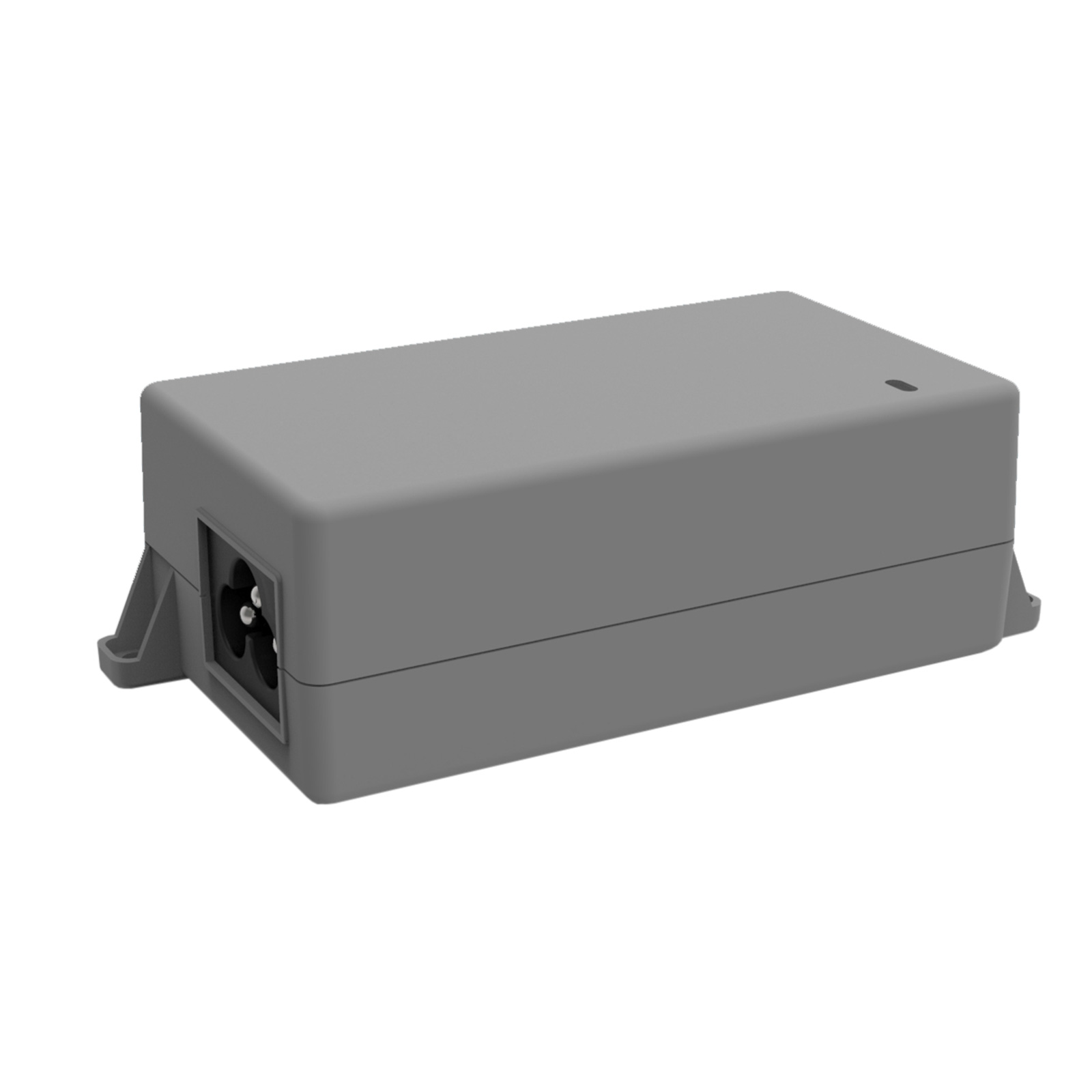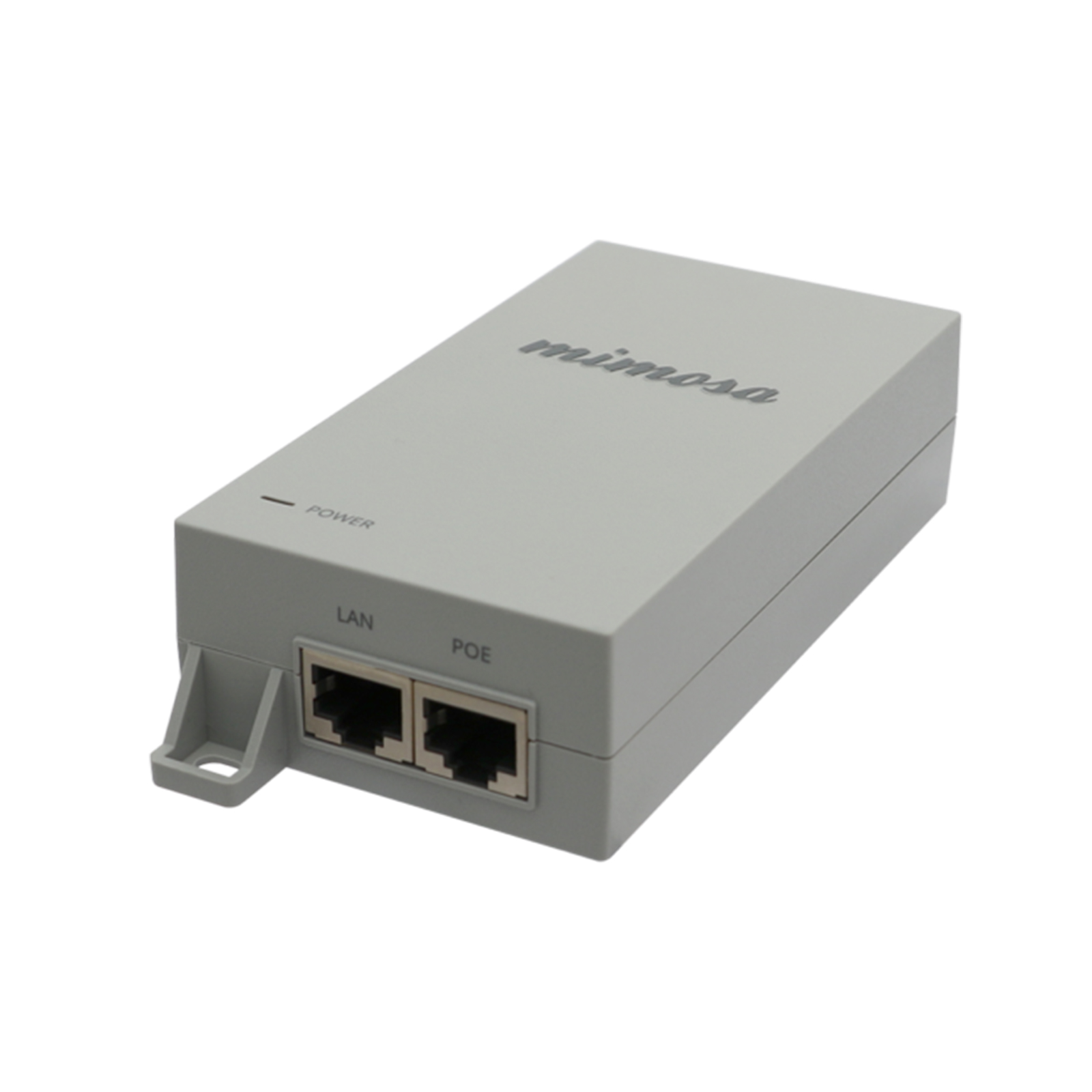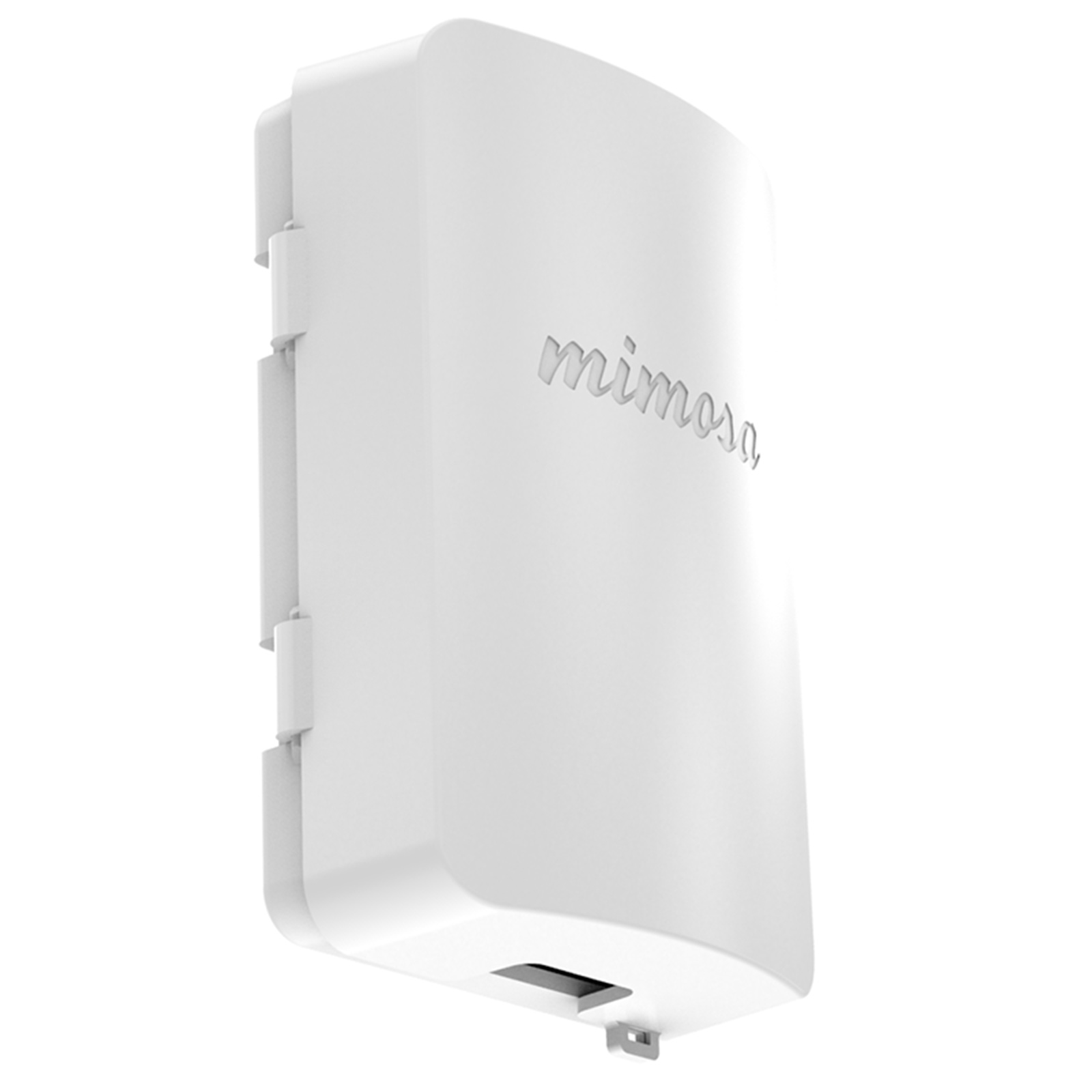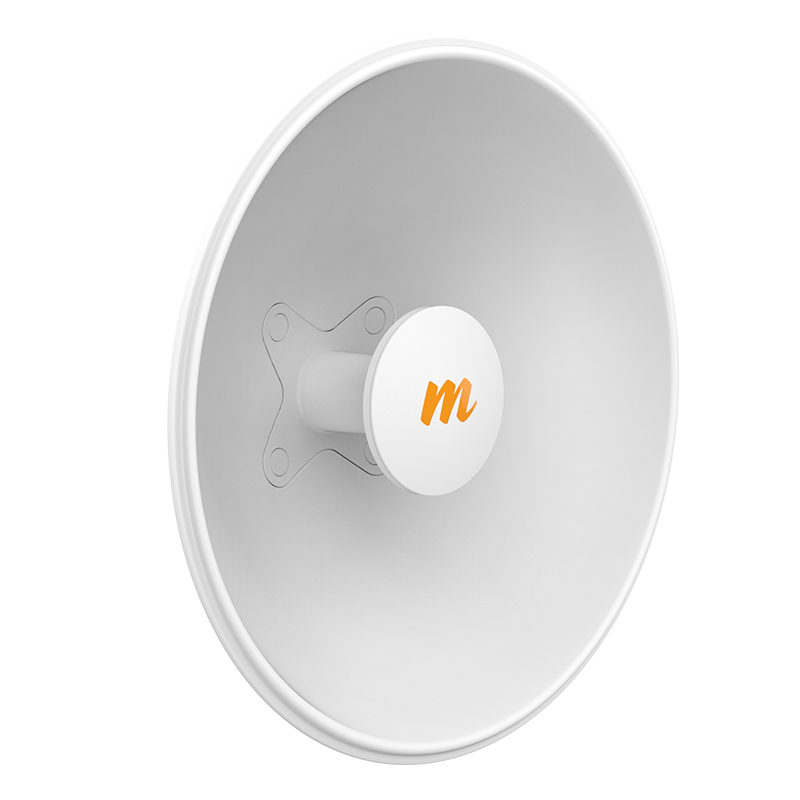Mimosa C5c PTP Backhaul & PTMP Client Radio, 4.9 - 6.4 GHz
2x2, 802.11ac, MU-MIMO (PoE Sold Separately)
SKU
100-00018
Weight
1.14 lb
Stock Quantity
Call for availability
The Mimosa C5c point-to-point (PTP) backhaul and point-to-multipoint (PTMP) client radio. The Mimosa C5c is a flexible connectorized client radio solution for accommodating short—and long-range PTP, PTMP, and custom antenna solutions. Incorporating unique support for Mimosa’s SRS technology, the C5c enables the fastest speeds and is the most scalable wireless access solution available today. The C5c is ideal for professionally installed rural fixed wireless and long-range applications for PTP backhaul links.
Flexible antenna options: Connect to virtually any dual polarization antenna to custom engineer longer-distance client links. The C5c has dual RP-SMA connectors for easy cabled antenna connectivity. It can be mounted to any pole via hose clamps or easily clipped onto antennas supporting compatible clip-on mounting bracket systems.
When it comes to PTP backhaul links, the C5c is a game-changer. It offers extreme price/performance in a small form factor, giving you the best value for your investment. Its wide frequency range support allows you to avoid crowded 5 GHz spectrum bands, and where regulations allow, it enables long distances with high system power and flexible antenna options. With the C5c, you can be confident that you're getting the most out of your PTP backhaul links.
When it comes to SRS technology, the C5c has you covered. It offers client-side support for Mimosa’s proprietary spectrum reuse synchronization (SRS) technology, ensuring that each client device precisely receives and transmits under the timing control of the access point. This dynamic allocation of upstream bandwidth, as opposed to alternative (fixed) timeslot protocols, enables significantly higher overall upstream network bandwidth utilization. With the C5c, you can be reassured that you're getting the most out of your network.
Product Includes
- 1x Mimosa Networks C5c
Product Does NOT Include:
- 502-00025 - Mimosa Networks PoE Injector 24V 12W
| Performance | |
| Max Throughput | PTP/PTMP: 700 Mbps IP (866 Mbps PHY) |
| Wireless Protocols | WiFi Interop Mimosa SRS |
| Modes | PTMP Client PTP Backhaul |
| Radio | |
| MIMO and Modulation | 2x2:2 MIMO OFDM up to 256-QAM |
| Bandwidth* | 20/40/80 MHz channels tunable to 5 MHz increments for Mimosa SRS; Tunable to standard WiFi channels for WiFi Interop |
| Frequency Range | PTMP: 4900–6400 MHz* PTP: 4900–6400 MHz Restricted by country of operation ‘new’ US/FCC 5600-5650 MHz support |
| Max Output Power | 27 dBm |
| Sensitivity (MCS0) | -87 dBm @ 80 MHz -90 dBm @ 40 MHz -93 dBm @ 20 MHz |
| Power | |
| Max Power Consumption | 12.9 W |
| System Power Method | Passive PoE (24-56VDC) |
| PoE Power Supply | Passive PoE compliant, 48-56 V Power over Ethernet supply (included) |
| Dimensions | Depth: 44.0 mm (1.73”) Width: 65 mm (2.56”) Height: 188.4 mm (7.42”) |
| Weight | 295 gr (10.4 ounces) |
| Mounting | Single pole strap |
| Connector Type | (2) RP-SMA (female) |
| Environmental | |
| Operating Temperature | -40°C to +55°C (-40°F to 131°F) |
| Operating Humidity | 5 to 100% condensing |
| Outdoor Ingress Protection Rating | IP55 |
| Operating Altitude | 4,420 m (14,501’) maximum |
| Shock and Vibration | ETS 300-019-2-4 class 4M5 |
| Features | |
| Gigabit Ethernet | 10/100/1000-BASE-T |
| Management Services | Mimosa cloud monitoring and management SNMPv2 & Syslog legacy monitoring HTTPS HTML5 based web UI |
| Smart Spectrum Management | Active scan monitors/logs ongoing RF interference across channels with no service impact; Dynamic auto-optimization of channel and bandwidth use |
| Security | WPA2 PSK & Enterprise 802.1x; Radius provisioning, COA, DM (from A5); 128-bit AES with hardware acceleration |
| VLANs | Per subscriber VLAN; Q-in-Q, triple tagging; Management VLAN |
| QoS | Supports 4 pre-configured QoS levels |
| Regulatory and Compliance | |
| Approvals | FCC Part 15.407 and Part 90Y, IC RSS210, CE, ETSI 301 893/302 502 |
| RoHS Compliance | Yes |
| Safety | UL/EC/EN/ 60950-1 + CSA-22.2 |
Related Products








